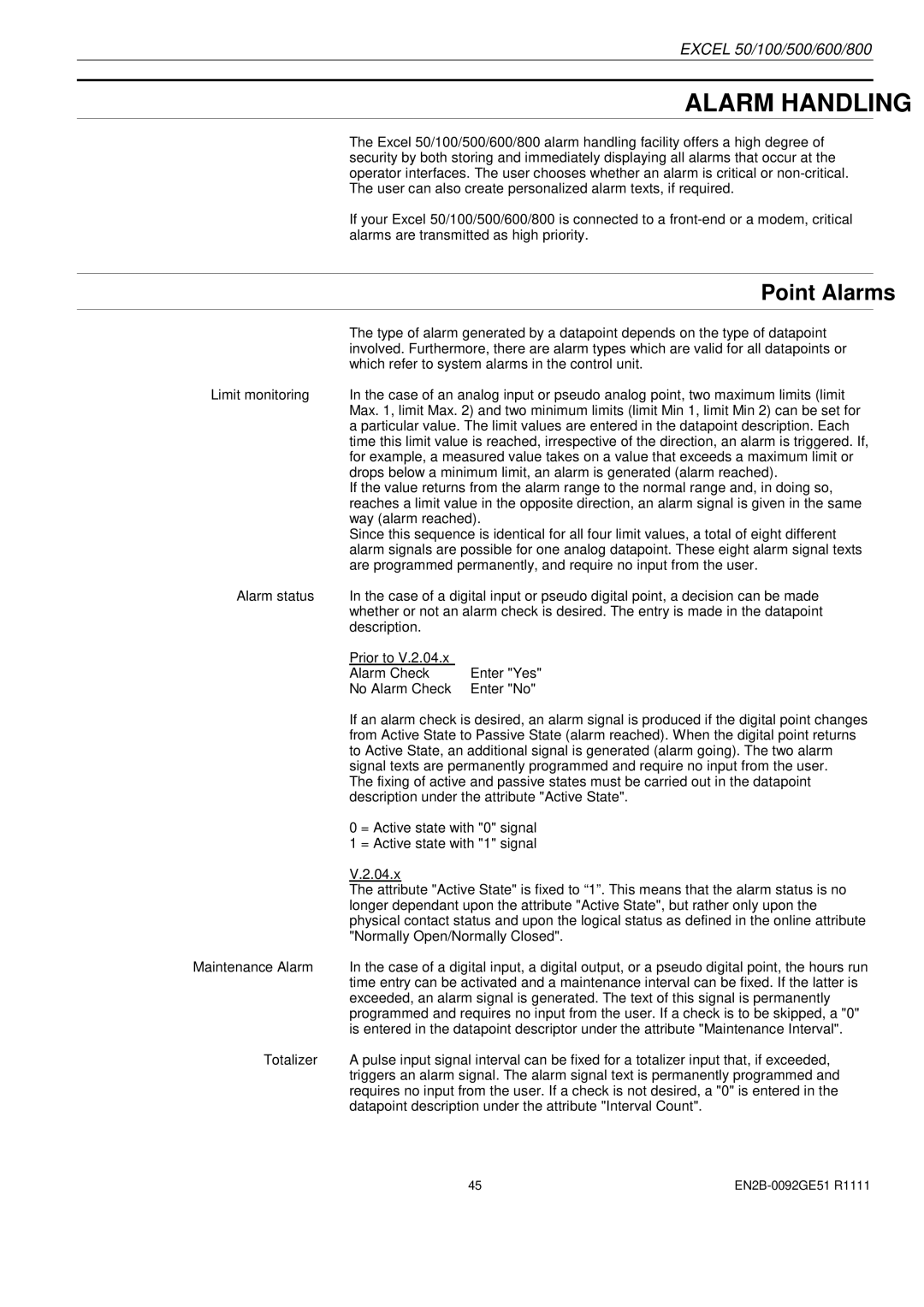
EXCEL 50/100/500/600/800
ALARM HANDLING
The Excel 50/100/500/600/800 alarm handling facility offers a high degree of security by both storing and immediately displaying all alarms that occur at the operator interfaces. The user chooses whether an alarm is critical or
If your Excel 50/100/500/600/800 is connected to a
Point Alarms
The type of alarm generated by a datapoint depends on the type of datapoint involved. Furthermore, there are alarm types which are valid for all datapoints or which refer to system alarms in the control unit.
Limit monitoring In the case of an analog input or pseudo analog point, two maximum limits (limit Max. 1, limit Max. 2) and two minimum limits (limit Min 1, limit Min 2) can be set for a particular value. The limit values are entered in the datapoint description. Each time this limit value is reached, irrespective of the direction, an alarm is triggered. If, for example, a measured value takes on a value that exceeds a maximum limit or drops below a minimum limit, an alarm is generated (alarm reached).
If the value returns from the alarm range to the normal range and, in doing so, reaches a limit value in the opposite direction, an alarm signal is given in the same way (alarm reached).
Since this sequence is identical for all four limit values, a total of eight different alarm signals are possible for one analog datapoint. These eight alarm signal texts are programmed permanently, and require no input from the user.
Alarm status In the case of a digital input or pseudo digital point, a decision can be made whether or not an alarm check is desired. The entry is made in the datapoint description.
Prior to V.2.04.x |
|
Alarm Check | Enter "Yes" |
No Alarm Check | Enter "No" |
If an alarm check is desired, an alarm signal is produced if the digital point changes from Active State to Passive State (alarm reached). When the digital point returns to Active State, an additional signal is generated (alarm going). The two alarm signal texts are permanently programmed and require no input from the user.
The fixing of active and passive states must be carried out in the datapoint description under the attribute "Active State".
0 = Active state with "0" signal
1 = Active state with "1" signal
V.2.04.x
The attribute "Active State" is fixed to “1”. This means that the alarm status is no longer dependant upon the attribute "Active State", but rather only upon the physical contact status and upon the logical status as defined in the online attribute "Normally Open/Normally Closed".
Maintenance Alarm In the case of a digital input, a digital output, or a pseudo digital point, the hours run time entry can be activated and a maintenance interval can be fixed. If the latter is exceeded, an alarm signal is generated. The text of this signal is permanently programmed and requires no input from the user. If a check is to be skipped, a "0" is entered in the datapoint descriptor under the attribute "Maintenance Interval".
Totalizer A pulse input signal interval can be fixed for a totalizer input that, if exceeded, triggers an alarm signal. The alarm signal text is permanently programmed and requires no input from the user. If a check is not desired, a "0" is entered in the datapoint description under the attribute "Interval Count".
45 |
